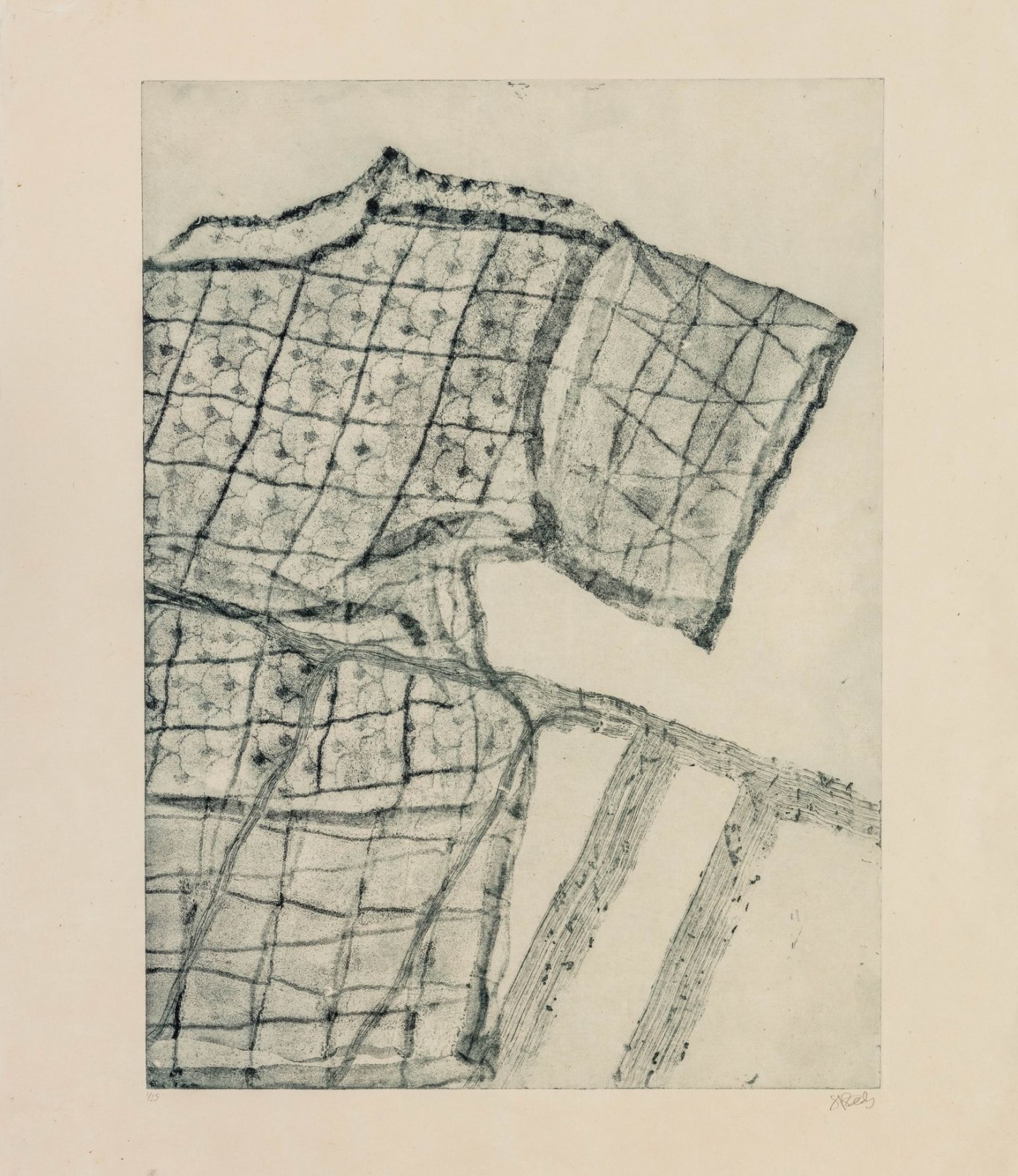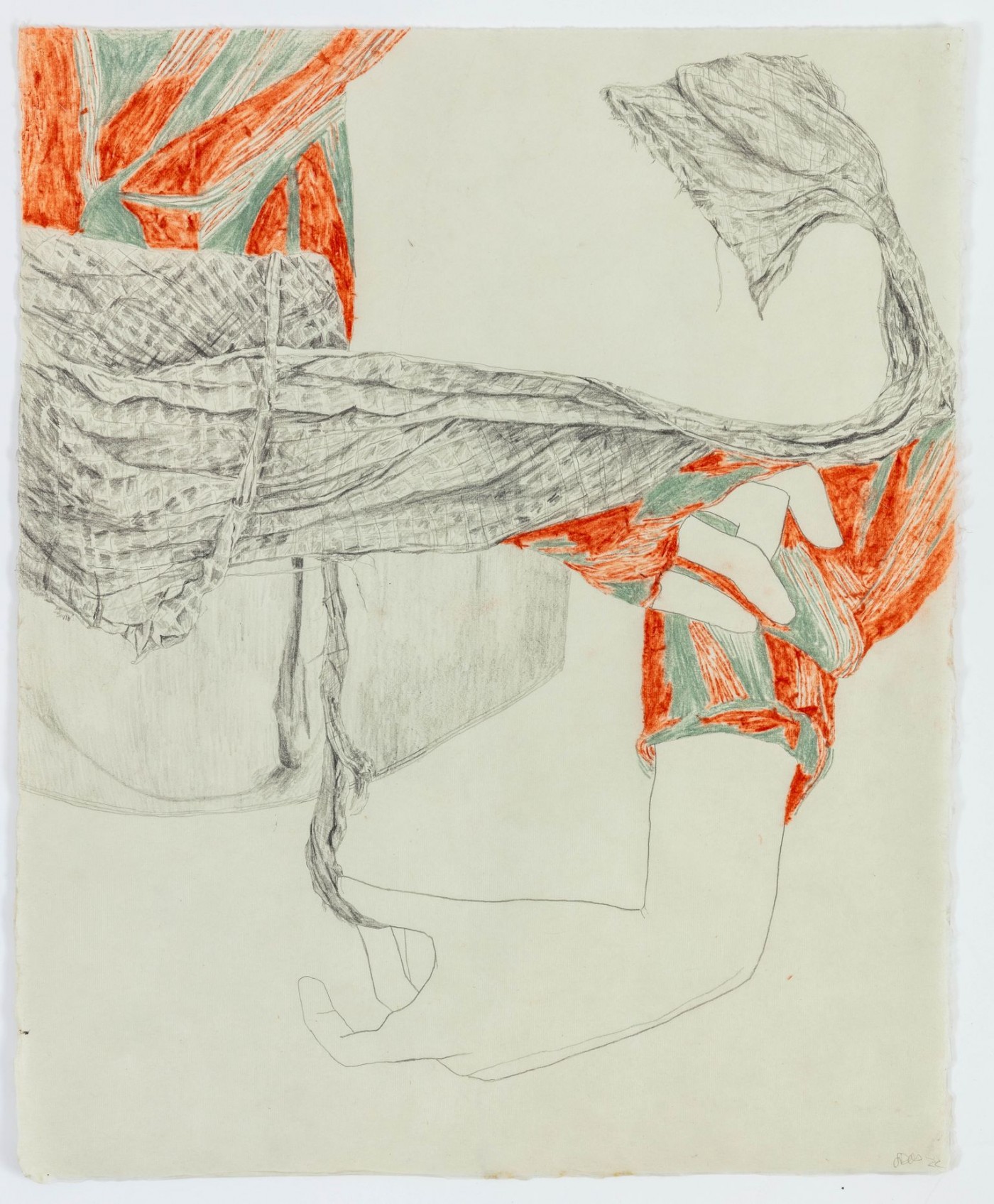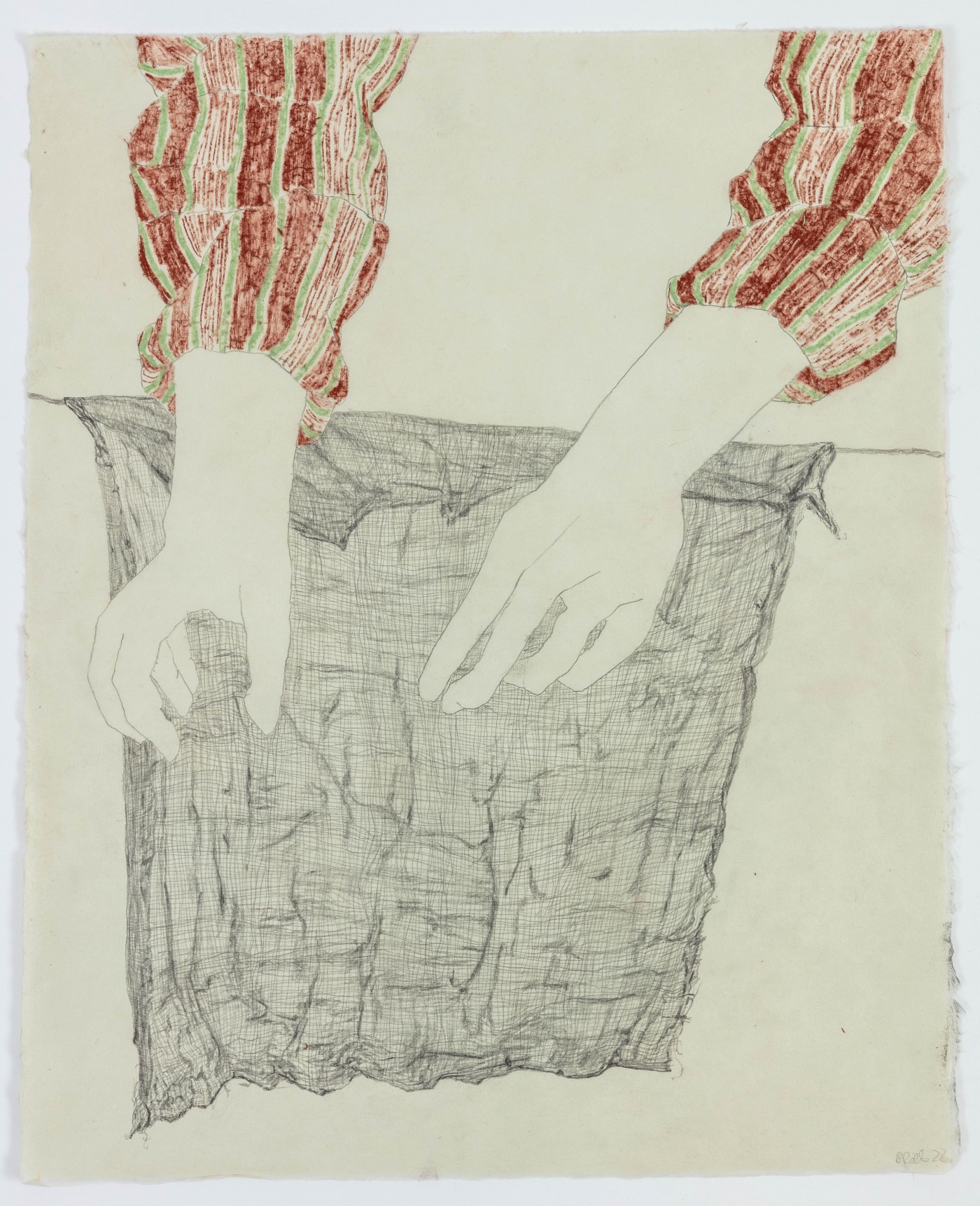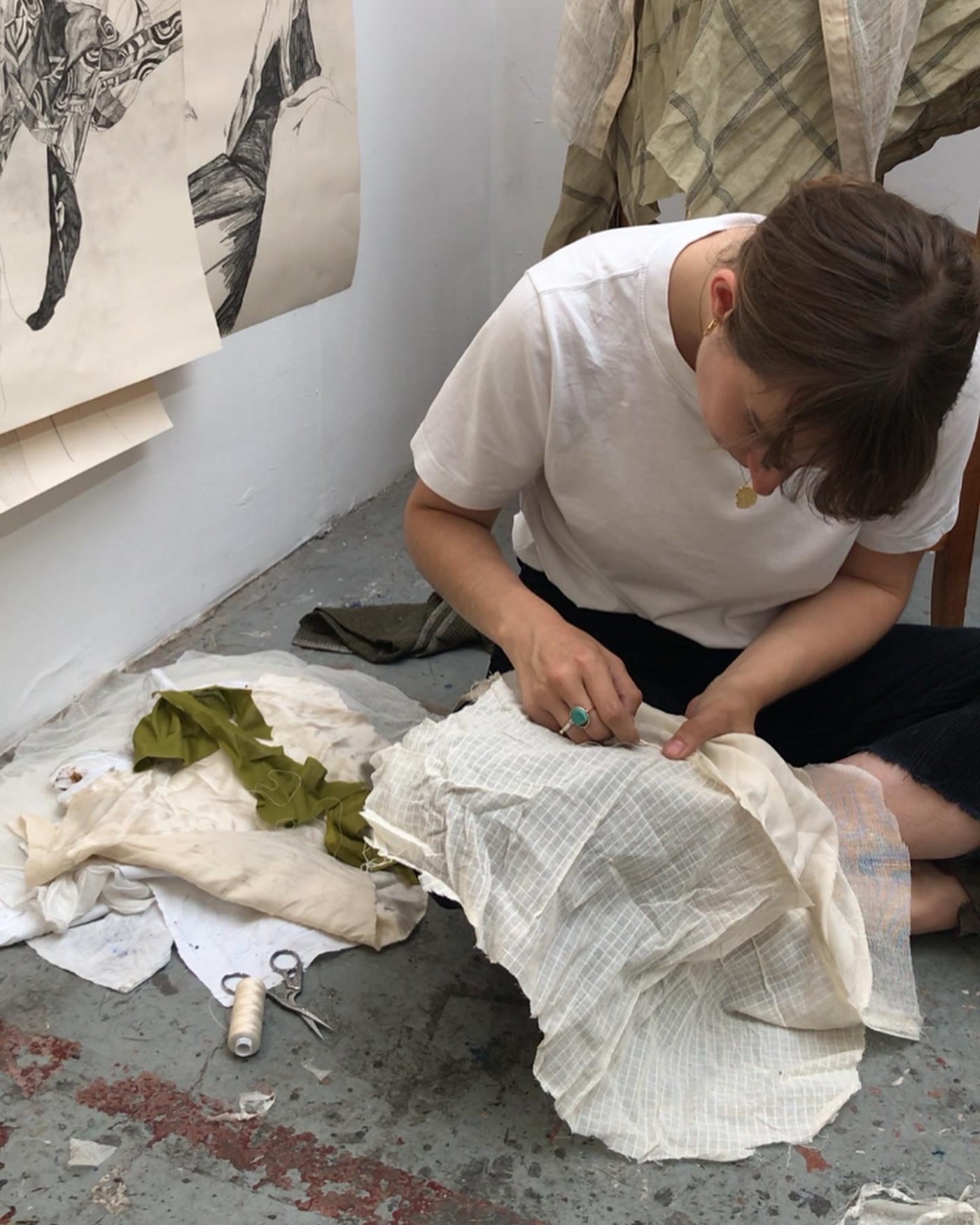- youtube
- bluesky
- Home
- About
- Costume Journal
- Membership
- Conference & Events
- Grants & Awards
- News & Social
In this week's blog, artist and researcher Sophie Nicole Dodds talks us through her practice, specifically her work utilising dress history archives. Across collections such as Goldsmiths and the Courtauld, Sophie talks us through the garments she has encountered and how she translates the qualities of these into her work.
As an artist and researcher, I have found immense inspiration and significance in exploring the archives and collections of old garments. Through my drawing process, I try to capture the essence of these timeless pieces, uncovering the hints of real bodies and wear, and embracing the transformative power of the archive as an expanded practice. I will share how this process feeds into my work, where I merge elements of the past and the present to create prints and sewn creations.
I was first introduced to using historical textiles and garments through the Goldsmiths Textile Collection, artifacts you can touch and handle, holding stories of the past, reflecting the lives of those who once wore them. This research led me far and wide but narrowed my practice to a specific area within the history of dress, the domestic practice and fashion methods within design. Looking at aprons, bonnets, overalls etc. At this time, I really homed in on my drawing with ideas of thinking through drawing and drawing for fieldwork. To capture quick movements, rather than just drawing for designing or drawing for studies. It aided me into my internship with the Courtauld Gallery & Science Museum, where I chose an unfinished fragment textile item by an unknown maker from the Omega Workshops from their collection to research and design the display of. The creases, stains, and mended seams speak of cherished memories, everyday struggles, and the ever-changing cultural norms of bygone eras. By studying these details, we gain insight into the human experience of making, learning, and wearing.
In a fast-paced world where fashion trends come and go, looking back at historical textiles serves as an anchor to our heritage and identity. It reminds us of the beauty and complexity of craftsmanship before mass production took over, which from studying bespoke tailoring speaks true to my methodology on how I approach objects and my art practice. Observing the wear and tear on these pieces humanizes history, making it more tangible and relatable to the present. I began to question the archive in museums linking it with loss and memory. How and why were items, specifically textiles, chosen to be given and then kept. The items I chose to work with were specifically work-wear items from a lower-class background, more ordinary and every day in their time. Focusing on wear that isn’t largely kept in an archive but still holds value, weight, and memories. Throughout our lives, we as humans curate our personal archives within our own material culture. When we encounter the passing of a loved one, we are automatically propelled into this curatorship of that person’s archive.
Drawing these historical textiles and garments is not only an art form but also a means of research and documentation. As we draw, we capture intricate details that might go unnoticed in photographs. The act of drawing allows me to immerse myself in the essence of the garments, connecting with the hands that lovingly created them and the bodies that wore them. This process breathes life into these artifacts, breathing new vitality into the narrative of the past. Whether that be your worn clothes strewn about on the floor or a beautiful corset on display.
The archive is not merely a collection of dusty artifacts locked away in boxes; it is an expanded practice that reaches far beyond the confines of physical spaces. The archive encourages us to explore the relationships between textiles, garments, and the broader cultural context. By engaging with the archive as an artist, I have discovered ways of interpreting the past and blending it with the present, particularly displaying the cloth at the Science Museum. Whilst at The Courtauld I was drawn to objects that could be seen as fragments or overlooked pieces. The piece tells a story of material culture in that it was made at the outbreak of the First World War as well as being just after the Arts & Craft movement. Upon closer inspection of the stitching with Textile Conservator Louise Squire, we concluded that the hem on the fragment seems to be in three parts. Someone had pulled the weft (horizontal) threads to make small holes ready for a technique called drawn thread work. On the one side there is a perfect example by someone who is experienced. In the middle there is an attempted version of the drawn thread work, and in the third section the pulled weft threads have stopped where only the rough tacking remains, finishing the hem in a haphazard way. This suggests someone sewed the first section to show how it was done, then the pupil never managed to finish it. As this textile is an Omega object, technique wasn’t what they were most interested in. It encapsulates a changing moment of how artists related to technology. It had some water damage marks, but the damage almost integrates with the bleeding design and adds to its wear and tear effect. You can read more about my research, drawing and display here: https://sites.courtauld.ac.uk/illuminating-objects/art-practice-as-resistance/
In the studio my work leaves the replicated drawings of the historical garments I encounter, and I merge them with remnants of cloth fragments from my ‘own archive’. My drawings and prints focus on the touch within our garments and bodies, capturing the delicate moments of tugging cloth, cocooning bedsheets, un-wearing garments, and the tender touches between individuals holding them in space. Whilst on residency at Dumfries House I studied the textiles of curtains, rugs and coverings of worn Chippendale chairs. Back in the studio using these drawings from the house I began to explore ways to reflect this wear within mixed media, stitch, and cloth.
Through my art, I seek to evoke emotions that elicit nostalgia and appreciation for the tactile and emotional aspects of clothing. ‘Relationship’ is an etching of t-shirts from two people in a relationship that were originally second hand, owned by them both separately for 10 years, worn by both and now not worn but kept due to damage and sentimentality. By incorporating these tangible threads of history into contemporary works, I aim to create a bridge between the past and present, reminding us that we are all part of an intricate, ever-unfolding fabric of human experience.
In a world often fixated on the future, the study of historical textiles and garments draws us back to our roots. It reveals the interconnectedness of generations and the beauty of the human touch that spans time.
To see more of Sophie's work, you can visit her website.
Image gallery

Getting Dressed, 2022. Sophie Nicole Dodds.

Original Cover, 2023. Sophie Nicole Dodds.



Unravelling. Sophie Nicole Dodds.

Pulliing Threads. Sophie Nicole Dodds.

Marking Time. Sophie Nicole Dodds.

